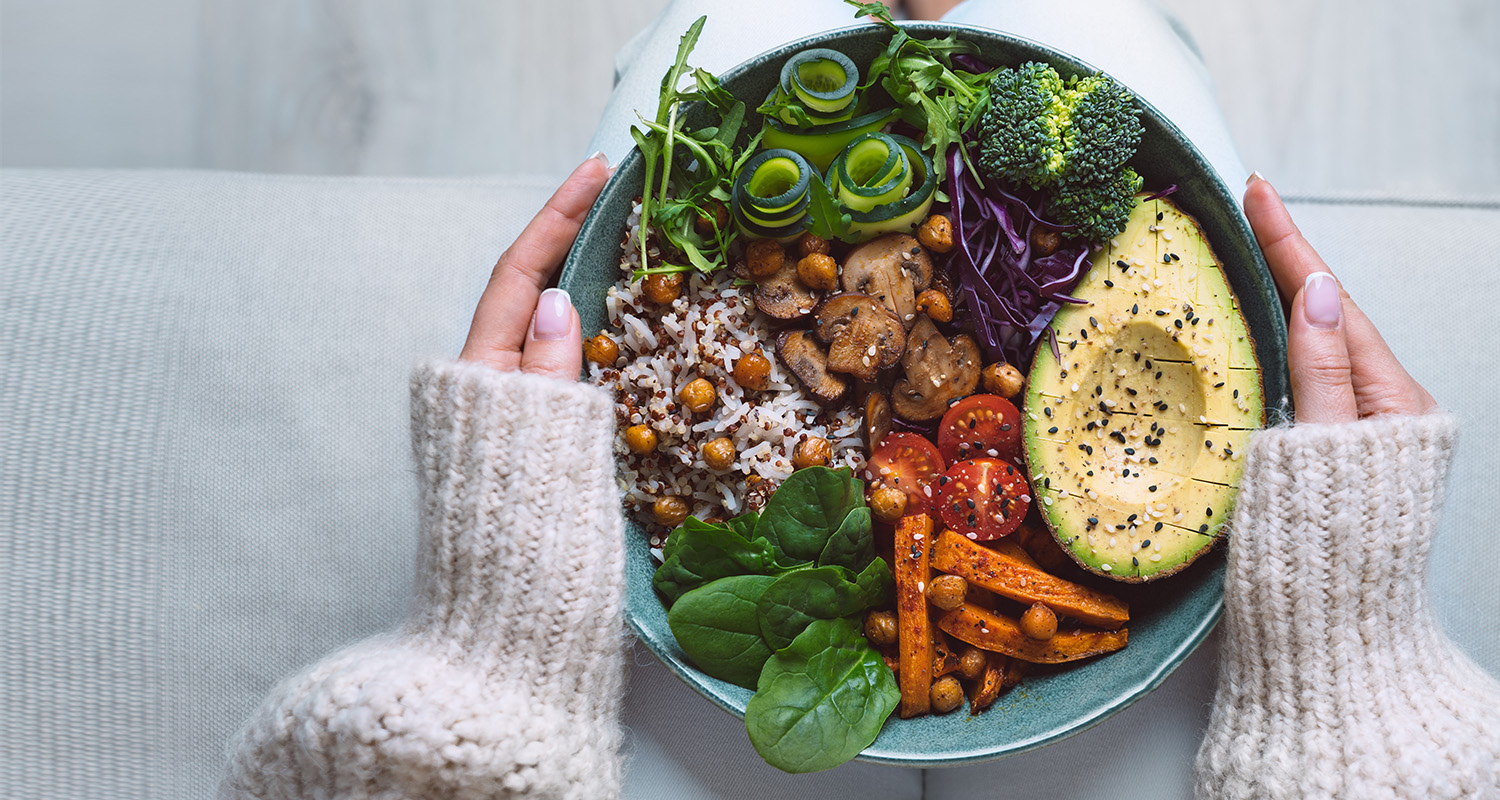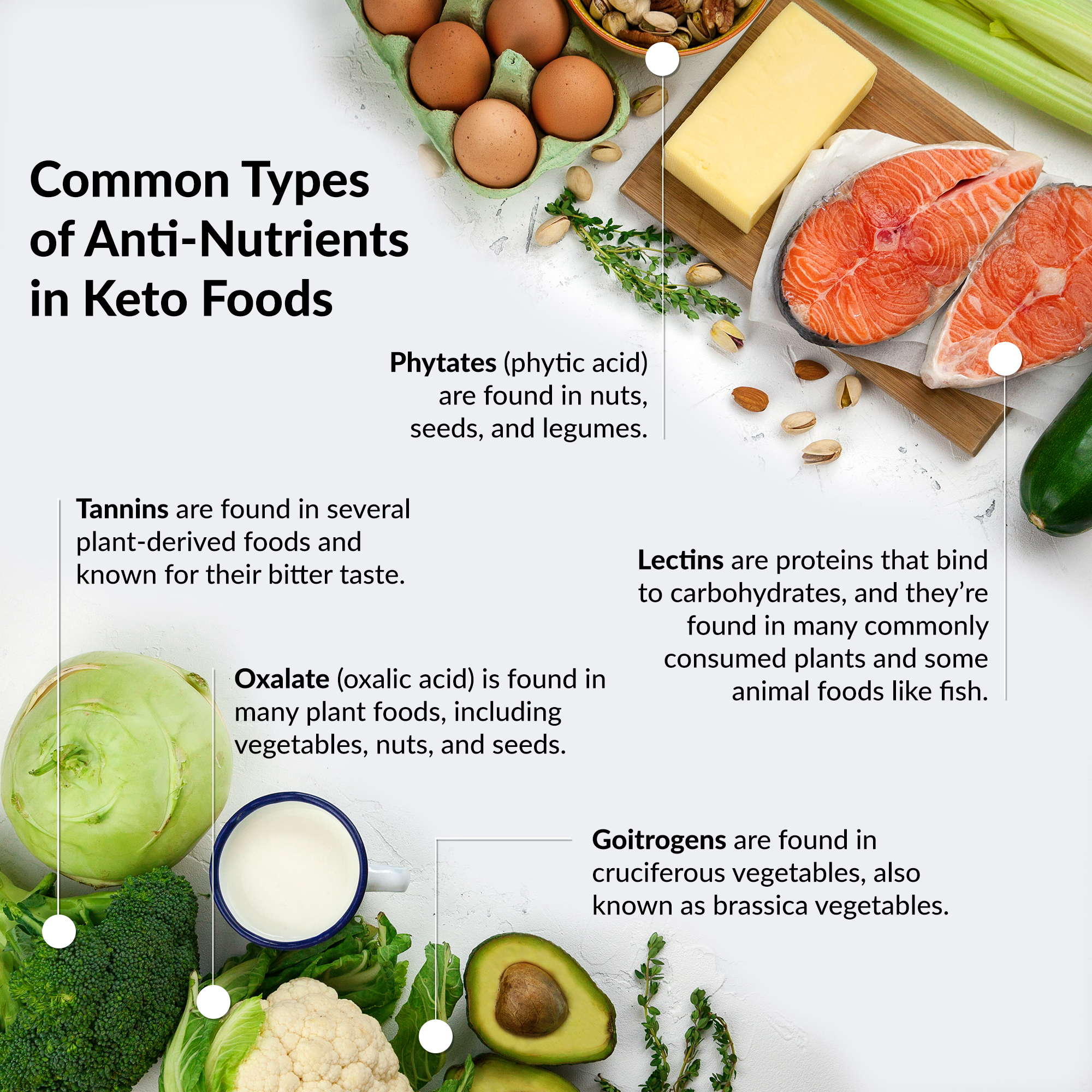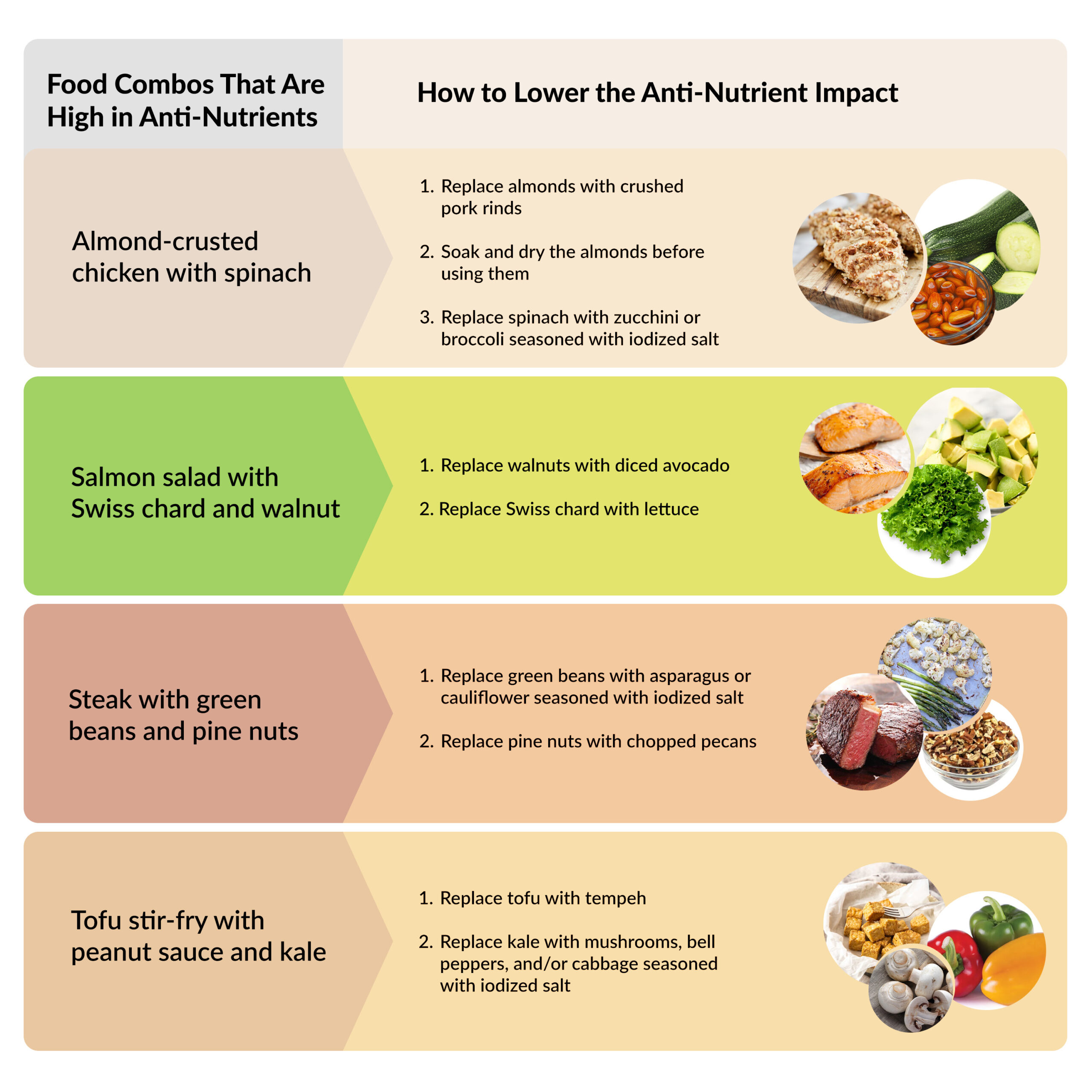Anti-nutrients are receiving a lot of attention within the keto and low-carb community. Are you wondering how these plant compounds might affect your health and whether they’re safe to include as a regular part of your diet? In this article we’ll explore what anti-nutrients are, their potential health effects, which keto-friendly foods contain them, and how you can minimize their impact while gaining all the benefits of a healthy ketogenic lifestyle.
What Are Anti-Nutrients?
Anti-nutrients are compounds in plants that serve as a defense mechanism to protect them from pests and plant-eating animals (herbivores). Research suggests that anti-nutrients may offer some health benefits, but they can also interfere with the absorption of essential vitamins and minerals in the digestive tract. This interference is mainly concerning when foods high in anti-nutrients are routinely consumed in large quantities, potentially leading to nutrient deficiencies over time.
Common Types of Anti-Nutrients in Keto Foods
Most keto diets are rich in animal foods which do not contain anti-nutrients. However, if you include plant foods like vegetables, nuts, seeds, and soybeans in your diet, you’ll get some anti-nutrients.
Let’s take a look at the most common types of anti-nutrients, their sources, and their potential health effects.
-
Phytates (phytic acid) are found in nuts, seeds, and legumes. They are considered anti-nutrients because they can bind with minerals like magnesium, iron, and zinc in the intestinal tract, potentially reducing their absorption. Research suggests they may also offer some health benefits, including antioxidant and anticancer effects. Keto-friendly foods that are high in phytates include almonds, walnuts, pine nuts, sesame seeds, and soybeans.
-
Oxalate (oxalic acid) is found in many plant foods, including vegetables, nuts, and seeds. Your body also produces oxalate when it metabolizes vitamin C and certain amino acids. Oxalate can bind to calcium in the digestive tract, blocking its absorption and potentially leading to kidney stone formation in those who are susceptible. While individuals who are prone to kidney stones or who have polycystic kidney disease may need to limit high-oxalate foods, there’s a lack of strong evidence supporting claims that these foods are problematic for other people when consumed in typical amounts. Spinach is the food highest in oxalate, followed by other leafy green vegetables, almonds, soybeans, cocoa powder, and raspberries.
-
Lectins are proteins that bind to carbohydrates, and they’re found in many commonly consumed plants and some animal foods like fish. There is speculation that they may cause digestive issues or autoimmune reactions in sensitive individuals, although this requires more research to confirm. Certain lectins found in legumes, such as hemagglutinin in kidney beans, can cause severe digestive illness if the beans aren’t thoroughly cooked. Emerging research suggests that lectins could have therapeutic benefits, including in cancer treatment, but further studies are needed to verify these findings. Keto foods that are high in lectins include green beans, tomatoes, and soybeans.
-
Tannins are found in several plant-derived foods and known for their bitter taste. They are considered anti-nutrients because they can bind to iron, reducing its absorption in the intestinal tract. However, the extent to which this occurs in humans remains unclear. Tannins have strong antioxidant properties, and some evidence suggests they may potentially reduce the risk of cancer and neurodegenerative conditions like Alzheimer’s disease. Black tea, green tea, wine, and cocoa are rich in tannins.
-
Goitrogens are found in cruciferous vegetables, also known as brassica vegetables. In the past, these plants were believed to harm thyroid function by blocking the uptake of iodine, a mineral needed for thyroid hormone production. However, a systematic review of human, animal and test-tube studies concluded that eating typical amounts of brassica vegetables (about 1/2 to 1 cup per day) doesn’t appear to harm thyroid function in people with sufficient iodine intake. In addition to broccoli, cauliflower, Brussels sprouts, and other cruciferous vegetables, soy is a source of dietary goitrogens. Goiter has been observed in infants fed soy formula, but studies show that this can usually be reversed by switching to cow’s milk or iodine-supplemented diets. In one study, half of the participants developed goiter and elevated TSH levels after consuming 30 grams of soybeans daily for one to three months, possibly due to insufficient dietary iodine.
How to Reduce Anti-Nutrients in Keto Plant Foods
While anti-nutrients can limit the absorption of some minerals, in most cases they do not seem to pose health issues when consumed in moderation. However, if you are concerned about anti-nutrients, you can minimize their impact without losing the health benefits and enjoyment of including plant foods in your keto lifestyle.
Here are a few practical tips to consider:
-
Consider soaking and drying: Soaking nuts, seeds, and legumes in water for several hours before consuming them can help reduce levels of lectins and oxalates by up to 50%. However, while soaking has been shown to significantly reduce phytic acid in grains and legumes, it appears to have only a minimal effect on the phytic acid content in nuts.
Follow these steps:
1. Place raw, unsalted nuts or seeds in a bowl. Cover with 2 cups of water per 1 cup of nuts, and add 1/2 teaspoon of salt per 1 cup of nuts. Cover and soak at room temperature for 8 to 12 hours.
2. Drain and rinse nuts thoroughly. Spread them on a baking sheet and dry in an oven at 150°F (65°C) for 12-16 hours or in a dehydrator at 115°F (46°C) for 12-24 hours.
3. Store dried nuts in an airtight container in a cool, dark place, or refrigerate/freeze for longer freshness.
-
Cook foods that are especially high in anti-nutrients: Boiling, steaming, or blanching can substantially reduce levels of oxalate, goitrogens, and lectins in plants. For example, boiling spinach can reduce its oxalate content by up to 87%. However, boiling or steaming vegetables can reduce their vitamin C content. So, consuming a combination of raw and cooked vegetables may be a good strategy for meeting micronutrient needs.
-
Explore fermentation: Fermenting vegetables and legumes can decrease their levels of phytates and tannins while enhancing the bioavailability of nutrients. Fermented foods like kimchi, sauerkraut, tempeh, and miso are excellent options on a keto diet.
-
Consume dairy products with high-oxalate foods: Are you trying to minimize oxalic acid but still want to enjoy spinach and other leafy greens occasionally? Making an omelet with a small amount of high-oxalate vegetables and a generous amount of cheese can reduce oxalate absorption while still allowing your body to absorb calcium from the cheese.
-
Get adequate iodine: If you regularly eat cruciferous vegetables or soybeans, make sure to include iodine-rich foods like seafood, dairy products and/or iodized salt in your diet to support thyroid health.
-
Aim for moderation and variety: Consuming a diverse range of foods in moderation can help ensure that no single anti-nutrient becomes problematic. Additionally, it’s important to pay attention to how your body reacts to certain foods that contain anti-nutrients and avoid those that cause digestive issues or other symptoms. For instance, there are online reports from people stating that their joint pain, irritable bladder, and vaginal pain improved after switching to a low-oxalate diet.
To lessen the impact of anti-nutrients at meals, consider making some of the suggested changes below.
Summary
Although many plants contain anti-nutrients, this shouldn’t discourage you from including nutrient-rich plant foods in your diet. If you consume enough high-quality protein and fat sources to meet your nutrition needs, anti-nutrients are unlikely to affect your mineral levels and overall health. By following our tips and choosing moderate amounts of plant foods that suit your preferences and tolerance, you can achieve a healthy, enjoyable keto lifestyle.





